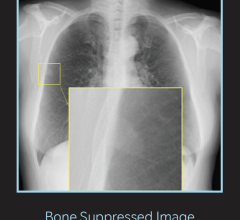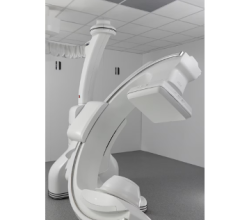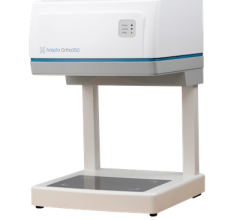This article appeared as an introduction to the Vascular Imaging Systems comparison chart.
Lowering radiation dose and improving navigation abilities of angiography systems have been among the top priorities of manufacturers over the past year. Another big trend is integration of angiography systems in hybrid cath lab/operating rooms (ORs) as collaboration between surgeons and interventionalists improves with increasingly less-invasive procedures. Following are some of the innovations in angiography technology that have been introduced in the past year.
CT-Like Imaging
An important step forward has been the creation of computed tomography (CT)-like images in the cath lab using rotational angiography. Originally introduced by GE in 1997, most angiography manufacturers created their own systems, where the C-arm makes a rotation around the patient to create a 3-D image dataset. The image can be used as an overlay for better navigation, anatomical reference and to help view device positioning. The images also overcome a shortcoming of angiography, which does not show the true lumen wall in vessels with stenosis.
The Siemens Artis zeego delivers large-volume syngo DynaCT, offering CT-like slice images of the heart in motion and an ECG-triggering option. Philips’ 3-D coronary angiography (3-D-CA) imaging creates a 3-D model of the coronary vessel tree. The cardiac imaging volume can also be used to select the optimal viewing angle throughout the examination. The system will move the C-arm into the selected viewing angle automatically so additional dose is not used to reposition the arm.
Advanced Visualization Aids Navigation
At RSNA 2009, GE introduced new visualization tools for its Innova 4100IQ. With the Advantage Workstation VolumeShare 4, it uses software to provide precise anatomical detail. It includes subtracted 3-D, which quickly visualizes vessels without having to remove surrounding bone, tissue and implanted devices. It also allows side-by-side nonsubtracted 3-D, subtracted 3-D or 3-D mask images to compare, merge and analyze complementary images.
GE’s Blended Roadmap helps navigate complex anatomy by superimposing any angiography or InnovaBreeze bolus image with fluoroscopy using the table-side controls. Registration tools correct for patient movement and help improve vessel and anatomy visualization.
Philip’s StentBoost stent visualization feature helps better define the stent in relation to the vessel wall for more accurate placement. Philips’ Allura Xper FD20 offers the MR/CT Roadmap feature to synchronize live fluoroscopy with previously acquired MRA/CTA datasets. Philips said this helps reduce contrast media use and X-ray dose compared to standard 2-D or 3-D navigation.
Veran is collaborating with GE to integrate its ig4 multimodality navigation system with Innova. The ig4 uses electromagnetic localization and image fusion to display an interventional instrument on a computer monitor that also displays a CT-based model of the target organ.
Lowering the Dose
Progress has been made in lowering X-ray dose with technical enhancements. Software now helps record and track exposure levels. Technologies were also created to allow more efficient use of the X-rays and contrast.
Innova’s dose-efficient technology, powered by the AutoEx control system, automatically and continuously adapts to customize radiation dose for each patient and procedure to help keep image quality and patient dose at optimum levels. It can reduce patient dose by as much as 40 percent without compromising image quality.
Philips offers similar dose-lowering features with its iDose technology. Its XperSwing feature also provides rotational angiography that reduces both X-ray dose and contrast usage. The C-arm rotates on a dual-axis, allowing a curved trajectory, so several anatomical views can be imaged in a single run. Conventional C-arms move along one axis, so several runs might be necessary.
For clinicians, Philips introduced DoseAware. It offers a live tracking display of clinician X-ray dose and warns them when they enter the radiation field. It records the information and generates exposure reports.
Table Technology
Angiographic system tables have become more versatile to allow better access to the patient and better positioning for optimal imaging. They are also being designed for use in hybrid cath labs. The newest generation of tables is motorized for accurate positioning and has the ability to tilt and pan.
GE’s InnovaIQ Table features auto-positioning so the patient can be brought back into repeatable clinical positioning for 2-D and 3-D acquisitions. It also allows for fast transitions from one complex position to another.
Toshiba’s CAT-880B hybrid suite table offers head-to-toe tilting and side-to-side cradling to meet the needs of both interventionalists and surgeons. The table features a 550-pound table weight limit, allows for angulations of up to 16 degrees in all four directions, and offers one of the lowest table-top heights.
Siemens’ Artis zeego robotic-assisted positioning enables variable working heights. It is also configured with specific parking positions for the C-arm in hybrid rooms to maximize room space during patient transfers.


 December 03, 2025
December 03, 2025 









